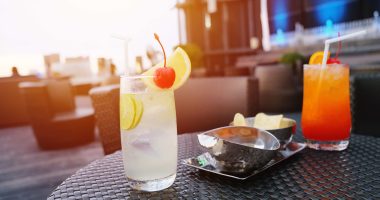In the heart of Namibia lies a culture that’s intricately woven with the land’s rhythm and natural cycles – the Ovambo people. Their roaming spirit and adaptability, combined with their harmonious connection to the seasonal efundja, have shaped the character of this remarkable community. From their ancient origins to their present-day roles in the nation’s industry and politics, the Ovambo culture stands as a testament to resilience and dynamism.
Advertisement
1. Origins and Tribes
Around 1550, the tribes collectively known as the Ovambo migrated from the Great Lakes region of East Africa to settle between the Kunene and Okavango rivers in central-northern Namibia. Comprising eight distinct tribes, the Ovambo’s cultural mosaic is a tapestry of identities. Among them, the Kwanyama and Ndonga are the largest, followed by the Kwambi, Mbalantu, Kwaluudhi, Ngandyela, Nkolonkadhi, and Unda.
Following Namibia’s independence in 1990, Ovamboland was divided into four regions: Omusati, Oshana, Ohangwena, and Oshikoto. Although the majority of Ovambo people reside in these regions, a significant number have migrated southward, spreading their influence across various sectors, notably mining, and fishing.
2. Cycle of the Seasons
The Ovambo people’s rhythm of life is intricately intertwined with the efundja – the floods that rejuvenate the flat, shallow depressions known as oshanas. These seasonal floods sustain a mixed economy of agriculture and livestock farming. Crops like mahangu (pearl millet), maize, groundnuts, and sorghum are staples, while cattle, goats, and chickens are reared alongside fishing in the oshanas. Additionally, groups of Ovambo women engage in home industries such as basketry, dressmaking, pottery, and woodcarving.
Advertisement
3. Changing Roles and Versatility
While tradition once designated Ovambo women to tend to the land and nurture the young, they are now increasingly making their mark in the modern workforce. The labor market welcomes them as civil servants, nurses, teachers, and shop assistants. An intriguing aspect of the Ovambo culture is their aptitude for trading, evident in the plethora of stalls, cuca shops (serving and selling liquor), and shopping complexes scattered throughout the region. Notably, Frans Indongo, one of Namibia’s most prosperous businessmen, has demonstrated this entrepreneurial spirit with ventures like Frans Indongo Gardens in Windhoek.
4. Political and Cultural Influence
Among Namibia’s diverse population, the Ovambo have actively shaped the nation’s political landscape. The South West Africa People’s Organization (SWAPO), initially the Owambo People’s Organization, was a non-violent pressure group led by visionary figures like Adimba Herman Toivo ya Toivo and Samuel Shafiishuna Nujoma. Nujoma became the first president of independent Namibia, succeeded by fellow countryman and former Cabinet Minister Hifikepunye Pohamba. The present President, Dr. Hage Geingob, continues this legacy.
Conclusion
The Ovambo culture is a vibrant testament to the harmonious coexistence of humanity with nature’s cycles. As they preserve their ancestral roots while embracing modernity, the Ovambo people exemplify a society that continues to flourish. Their traditions, adaptability, and political engagement define them as a crucial thread in Namibia’s rich cultural fabric.


